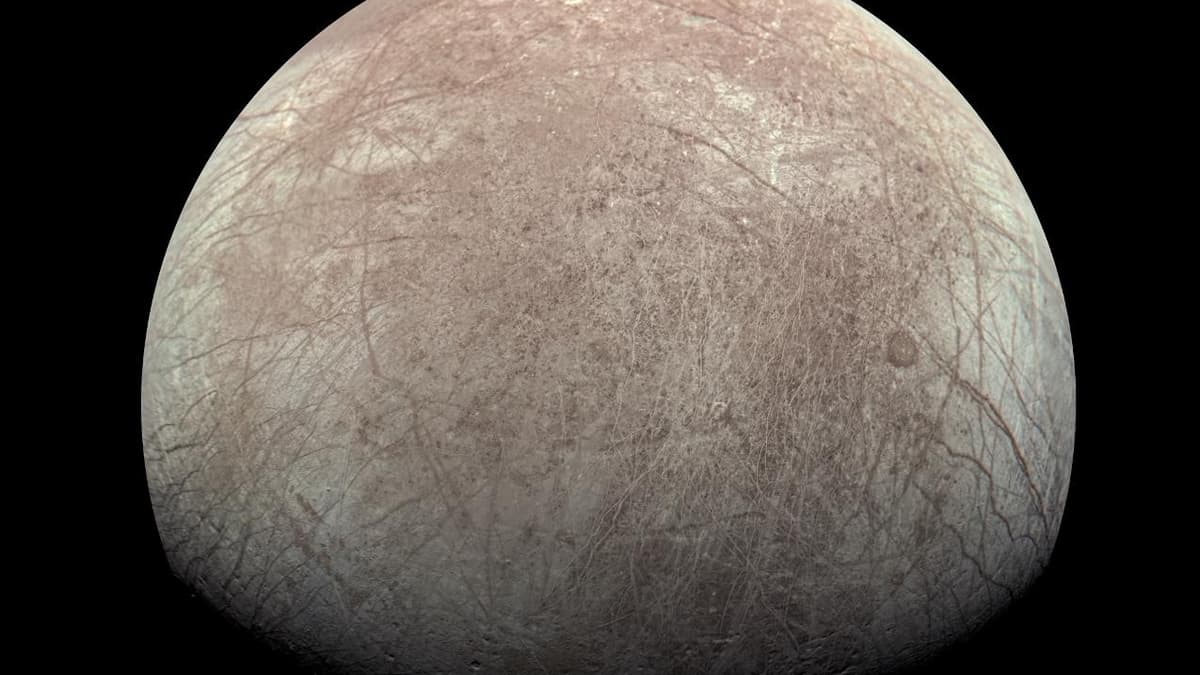Data obtained from NASA’s Jupiter orbiter indicates that Europa, one of Jupiter’s moons, releases approximately 26 pounds per second (12 kilograms per second) of oxygen, a significantly lower amount compared to previous estimates by almost 100 times. This revelation has implications for the potential discovery of life within Europa’s subsurface ocean.
Speculation about the existence of life within Europa has persisted since the initial Voyager missions that passed by Jupiter in 1979. Europa, which is around 90% the size of Earth’s Moon, is characterized by a thick ice crust. Through calculations of tidal forces acting on the moon and analysis of images capturing surface features like cracks, provided by NASA probes, scientists have inferred the presence of a global ocean beneath the 10- to 15-mile (15- to 25-kilometer) thick icy shell, reaching depths of 40 to 100 miles (60 to 150 kilometers).
The presence of water on Europa is a key factor that captures the attention of astrobiologists, as water is considered a fundamental requirement for life as we currently understand it. While some experts suggest water alone may be adequate for life, the concept of spontaneous generation has been disregarded since the mid-19th century. Researchers are now exploring additional factors such as temperature, energy availability, salinity levels, and the composition of Europa’s interior to assess the potential habitability of the moon.
Moreover, the availability of essential elements like carbon, hydrogen, oxygen, nitrogen, phosphorus, and sulfur, necessary for the formation of amino and nucleic acids crucial for life, is a critical consideration. The recent data from the Juno mission has revised the understanding of Europa’s oxygen production. Previous estimates of up to 2,000 pounds (1,000 kilograms) of oxygen per second have been corrected to approximately 1,000 tonnes per day. While this quantity could sustain a million humans for a day according to NASA, it is relatively minimal considering Europa’s size.
The measurements were conducted using Juno’s Jovian Auroral Distributions Experiment (JADE) instrument, which detects ions like hydrogen, oxygen, and sulfur escaping from Europa. The interaction between Europa and Jupiter’s magnetic field results in the moon being bombarded with charged particles, leading to the gradual loss of water molecules in the form of hydrogen and oxygen.
Although Europa’s oxygen production is not as substantial as previously assumed, the possibility of life on the moon remains open, albeit with reduced odds. The findings from Juno have provided valuable insights into Europa’s environment and shed light on the intricate processes at play within this intriguing icy world.
